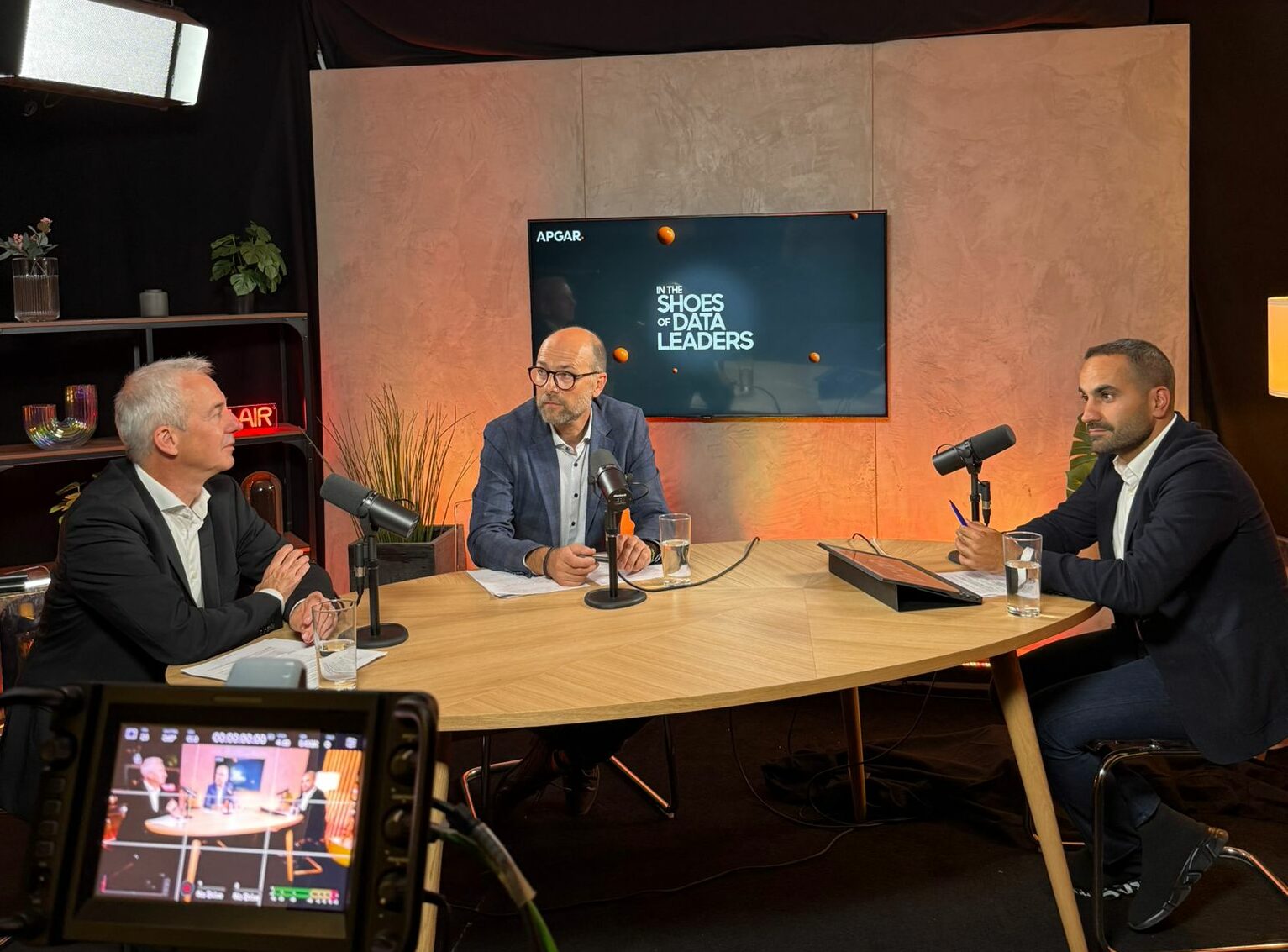Business Solutions
In the Shoes of Data Leaders – Live with Pernod Ricard
Preparing an ERP modernization program: Making data an enabler, not a risk.

In the Shoes of Data Leaders
In the Shoes of Data Leaders is our LinkedIn Live series that brings you inside the real challenges and strategies of data leaders driving transformation in complex environments. Each episode features candid conversations with executives and practitioners who show how data can move from a technical constraint to a true business enabler.
In this third episode, we explored a critical question: how can organizations prepare an ERP modernization program, and make sure data drives success instead of becoming a risk?
Our guests:
- Vincent Meunier, Chief Data Management Officer, Pernod Ricard
- Marcel Hugentobler, Director, APGAR Switzerland
Why Data is seen as a risk
In ERP programs, data migration, master data management (MDM), and integration are often treated as risks. The reasons are clear:
- Without accurate, consistent data, ERP systems cannot operate correctly.
- Data is often misunderstood and treated as a “black box.”
- Harmonization impacts not only ERP, but all connected applications.
As Vincent pointed out, this makes data appear as a roadblock — but in reality, it’s also the foundation for ERP success.
Embedding data into the ERP strategy
ERP modernization cannot succeed if data is handled as an afterthought. A data program must be fully embedded into the ERP program.
At Pernod Ricard, this meant:
- Driving harmonization and standardization across a fragmented IT landscape.
- Embedding data governance and assigning clear ownership across functions.
- Ensuring data quality by design, with processes and KPIs to sustain improvements.
Marcel added that aligning data and ERP is essential because master data directly supports business processes. If data is properly prepared and governed, it creates trust and accelerates adoption.
Setting the right ambition
One of the most important early decisions: should master data initiatives serve only ERP needs, or should they aim for an enterprise-wide model?
At Pernod Ricard, the decision was to go enterprise-wide. That meant:
- Building a global data model that could serve ERP and beyond.
- Preparing for impacts on downstream systems and reporting.
- Allowing for local flexibility, while ensuring global consistency.
Governance and harmonization
Many “data quality” problems actually come from governance gaps — unclear definitions, ownership, or rules. By establishing strong governance, Pernod Ricard was able to resolve issues more effectively and avoid costly rework.
Harmonization at global scale also brought new challenge, from impacts on historical reporting to sensitive issues like sales incentives. The lesson: consistency is key, but it must be balanced with local needs.
Accelerators to speed up transformation
To help organizations avoid starting from scratch, APGAR developed Business Solutions accelerators — preconfigured data models and validation frameworks that reduce risk and save time.
For Pernod Ricard, using accelerators aligned with SAP data models provided a valuable head start, while still leaving room for necessary customization.
Key takeaways
From Pernod Ricard’s journey, a few lessons stand out:
- Invest more time upfront in modeling and data analysis.
- Treat migration as a chance to build governance and knowledge, not just move data.
- Remember that ERP and MDM programs are about people as much as systems.
As Vincent summarized, ERP modernization isn’t just about upgrading technology. It’s about evolving how data is structured, shared, and used across the business. With the right approach, data moves from being a source of risk to becoming the backbone of transformation.

IN THE SHOES OF DATA LEADERS
Preparing an ERP modernization program: Making data an enabler, not a risk